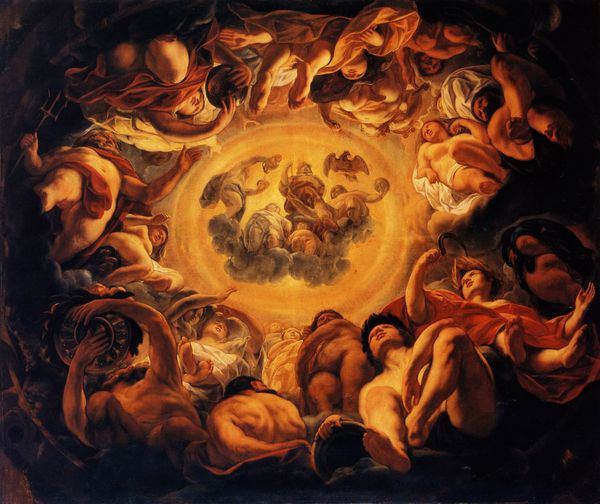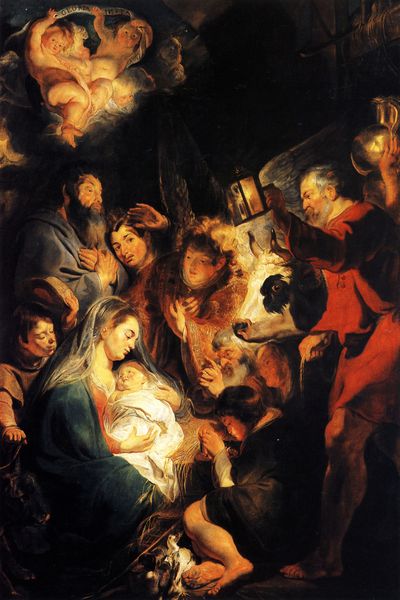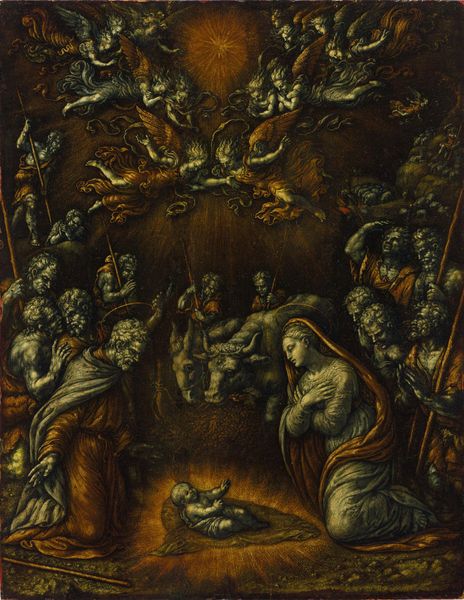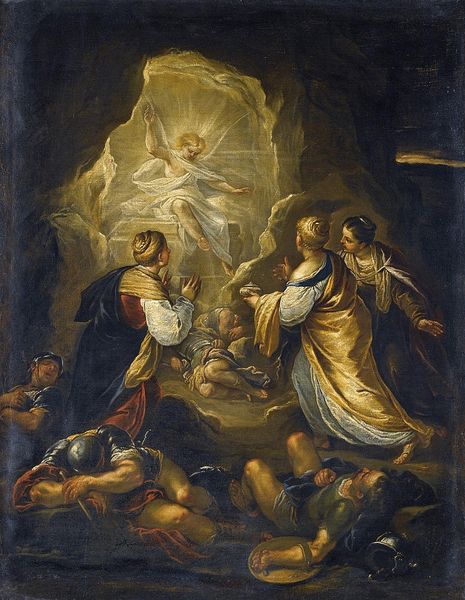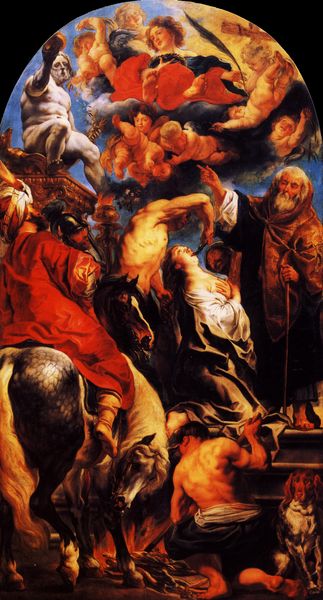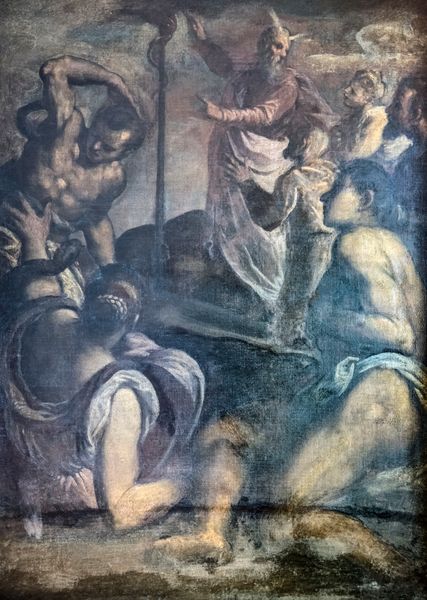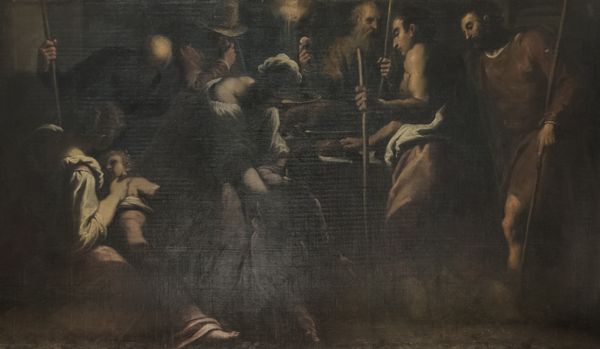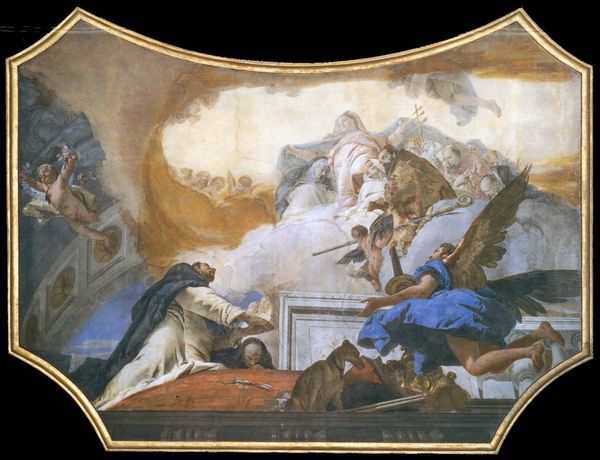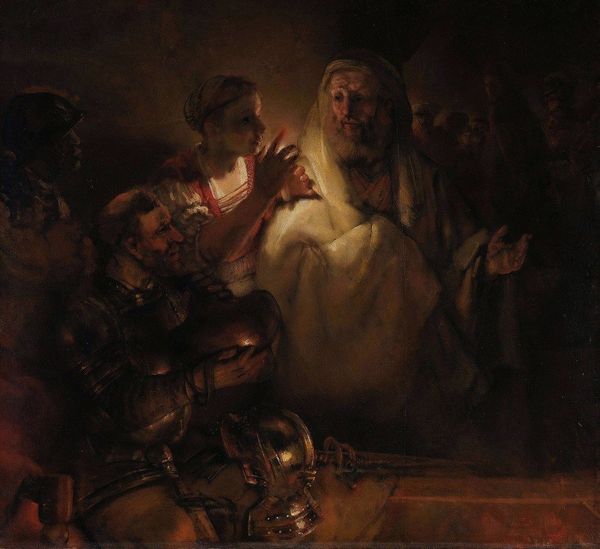
The father of the Psyche consultants of Oracle in the Temple of Apollo 1652
0:00
0:00
jacobjordaens
Private Collection
carving, painting, oil-paint, fresco, photography
#
carving
#
allegory
#
baroque
#
painting
#
oil-paint
#
fresco
#
photography
#
roman-mythology
#
mythology
#
history-painting
Dimensions: 234 x 268 cm
Copyright: Public domain
Curator: This oil on canvas, "The father of the Psyche consultants of Oracle in the Temple of Apollo," was completed in 1652 by Jacob Jordaens. It’s held in a private collection. Editor: My initial reaction is of a stage dramatically lit. There's a deep contrast with the darkness surrounding the figures. The texture appears quite rich, almost like a fresco, despite being an oil painting. Curator: Absolutely. It's easy to read the drama and staging as intentionally theatrical, meant to mirror the ritualistic and often performative role of oracles. The painting invites us to explore the intersection of gender and power dynamics within the oracle system, challenging traditional patriarchal interpretations of mythological narratives. The women depicted aren’t merely passive recipients of divine insight, but active agents in interpreting prophecies and counseling those who sought their wisdom. Editor: You see the figures caught in moments of high theatricality and intense gesturing, a perfect realization of Baroque aesthetics. Let's consider how the architectural framing almost seems to cradle the scene, providing it structure while at the same time giving a dizzying glimpse beyond and through an octagonal aperture. The composition draws my eye from the lower left corner with that dog and then sweeps upward to the figures in their varied responses. Curator: The choice to represent Psyche's father, as a key consulting figure at the Temple, also points toward how paternal lineage, and the burden and expectation thereof, determined women’s access to knowledge and spiritual authority. By framing the myth this way, Jordaens offers a critical look at inherited privilege within sacred institutions. Editor: But what about the light itself? It seems almost an active element, a character maybe. It illuminates some details and casts others in dramatic shadow, enhancing the drama, the movement. Curator: Yes, and considering light’s symbolic associations with divinity, knowledge and revelation, this dramatic interplay can be understood as reflecting a period rife with power imbalances. In an age marked by shifting paradigms in both religious and philosophical understandings, enlightenment became deeply intertwined with issues of inequality. Editor: It's fascinating to analyze it from these different angles, drawing attention to the composition itself and how it influences how we see its place in a much wider conversation. Curator: Indeed. There is an intricate dance happening between representation, symbolism, and societal issues.
Comments
No comments
Be the first to comment and join the conversation on the ultimate creative platform.

